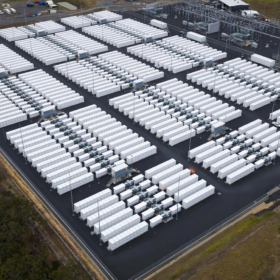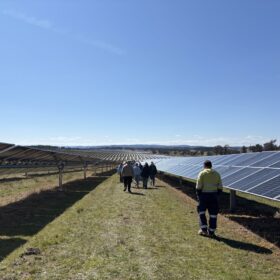Scientists from South Africa’s Durban University of Technology have investigated the optimised roof pitch angles for integrating PV systems into low-cost buildings.
“Access to affordable, reliable electricity remains challenging, particularly in low-income housing. Solar PV emerges as the most suitable renewable energy option, leveraging high solar irradiance and scalability to meet rural and urban energy needs,” said the team.
“This study focuses on bridging energy access, affordability, and sustainability gaps in low-income housing by evaluating clean electricity sources, their limitations, and their suitability for integration into cost-effective, sustainable housing projects.”
The group developed a computer model using PV*SOL simulation software, in which they researched PV performance under various conditions. The system was simulated to operate in a rural area in southern Nigeria.
For the experimental setting, the irradiance there was measured at 140–165 kWh/m²/month, with a global horizontal irradiance (GHI) of 1926.01 kWh/m²/year and an average temperature of 25.9 C.
The house was assumed to have a gabled roof with an area of 140 m² and a household of five people, consuming 5,000 kWh/year, while the roof could accommodate 80 W to 300 W PV modules, with 40 modules on its northern side and 40 on its southern side. The capacity totalled 24 kW.
According to the researchers, a tilt of 25° is the minimum required to create space for 80 PV modules. Therefore, the roof tilt angle was simulated in the range of 25° to 45°. In addition, the researchers have considered cases in which the PV modules are installed on only one gable (either the north- or south-facing roof) or both.
“Roof pitch influences usable PV installation area, particularly on steep roofs. The theoretical optimal tilt for energy production at this location is approximately 5.67°. However, a 25◦ pitch allows for sufficient space for 80 panels (300 W each) to achieve the designed 24 kW capacity,” the academics stated.
South-facing roofs were found to receive 8% more solar radiation (1,845.93 kWh/m2) than north-facing roofs (1,710.12 kWh/m2), witht north-facing roofs achieving a slightly higher performance ratio (87.04% vs. 86.09%). Furthermore, the group found that energy generation was higher in the south-facing roof at 19,082.96 kWh/ year, which is 6.8% more than the north-facing roof’s at 17,873.97 kWh/ year.
In addition, the simulations showed that the system avoids approximately 18,703 kg of CO2 emissions per house annually, totaling 1,870,300 kg/year for a 100-unit estate. Due to this, the team has recommended that policymakers … mandate rooftop PV systems in low-cost housing.
“Prioritising south-facing panel orientation to maximise solar radiation exposure,” the researchers concluded.
“Where two-sided mounting is used, ensure higher capacity utilisation of the south-facing roof. This can be incorporated into the building plan during the layout and design stages.”
Their findings were presented in “Integrating rooftop PV system in low-cost building plan: A pathway to improving energy access and environmental sustainability,” published in Energy & Buildings.
This content is protected by copyright and may not be reused. If you want to cooperate with us and would like to reuse some of our content, please contact: editors@pv-magazine.com.








The article explains that in the study area – Southern Nigeria – south facing rooftops should be used. This makes sense for northern hemisphere countries like Nigeria.
Would be interested to see the analysis which supports solar on south facing rooftops in the souther hemisphere as the leader suggests.
Finally I am not sure how closely the image in this story represents the study dwelling. Is it not a little misleading perhaps?